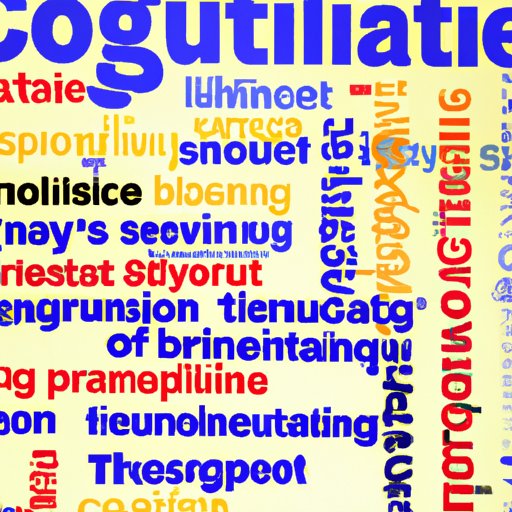Introduction
Language is an integral part of any culture, and it plays a vital role in shaping and preserving cultural identity. Language is not just a means of communication, but also a reflection of cultural values and beliefs, a vehicle for socialization, and a way to express emotions and ideas. In this article, we will explore the interconnected relationship between language and culture, examining how language influences culture and vice versa.
Body
Analyzing How Language Shapes Culture and Vice Versa
The relationship between language and culture is complex and multi-faceted. Language has the power to shape and define culture, while culture can also influence the evolution of language. To better understand this dynamic relationship, let’s take a closer look at how language influences culture and how culture influences language.
How Language Influences Culture
Language has the power to shape and influence culture. For example, language can help to create shared experiences and memories among members of a community. Through language, people are able to communicate their thoughts and feelings, share stories, and pass down knowledge from one generation to the next. Language also helps to shape our perception of the world, as the words we use to describe things and events can alter the way we think about them.
How Culture Influences Language
Just as language can influence culture, culture can also influence language. Language is constantly evolving, as new words and phrases are created to reflect changes in society and culture. For example, in recent years, there has been an influx of new terms related to technology, such as “streaming” and “tweeting”. These words have become part of our everyday vocabulary, reflecting the changing nature of our culture.
Examining the Role of Language in Preserving Cultural Identity
Language is more than just a means of communication; it is also a powerful tool for preserving cultural identity. Language serves as a marker of community, helping to distinguish one group from another. It also helps to unify a group of people, giving them a sense of belonging and common purpose. Furthermore, language is a tool for cultural transmission, allowing us to pass down traditions, customs, and beliefs from one generation to the next.
Discussing the Impact of Language on Cultural Values and Beliefs
Language is a reflection of the values and beliefs of a particular culture. The words we use to describe things and events are shaped by the collective beliefs and attitudes of a society. For example, certain cultures may view certain activities or behaviors as taboo, and this belief is often reflected in the language they use to describe those activities or behaviors.
At the same time, language can also reinforce cultural beliefs. By using language to talk about certain topics or express certain opinions, we can help to shape the views and attitudes of others. This is why it is important to choose our words carefully when discussing sensitive topics, as our language can have a powerful effect on how people think and act.
Exploring the Use of Language as a Tool for Cultural Expression
Language can also be used as a tool for cultural expression. Through language, we are able to communicate our thoughts and feelings, express our emotions, and share ideas. Language can also be used to express our cultural identity, as certain words or phrases may be associated with a particular culture or region.
In addition, language can be used to create art and literature, which can provide insight into a culture’s values and beliefs. Poetry, music, and other forms of creative expression can help to capture the essence of a culture and its people.
Investigating How Language Influences the Development of Cultural Norms and Practices
Finally, language can be used to shape the development of cultural norms and practices. Through language, we are able to explain and discuss different behaviors and attitudes, helping to create a shared understanding of what is acceptable or inappropriate in a given society. Language can also be used to enforce certain norms, as certain words or phrases may be used to reinforce certain behaviors.
Conclusion
In conclusion, language and culture are intertwined and mutually reinforcing. Language has the power to shape and define culture, while culture can also influence the evolution of language. Language is an essential component of any culture, acting as a marker of community, a tool for cultural transmission, and a vehicle for expressing cultural values and beliefs. Finally, language can be used to influence the development of cultural norms and practices. The interconnected relationship between language and culture is complex and fascinating, and further research is needed to fully understand the intricate dynamics involved.
(Note: Is this article not meeting your expectations? Do you have knowledge or insights to share? Unlock new opportunities and expand your reach by joining our authors team. Click Registration to join us and share your expertise with our readers.)
